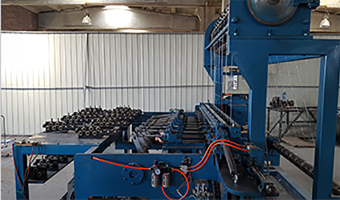The Evolution and Importance of Float Glass Production
Float glass, a remarkable innovation in the glass industry, has transformed how we perceive and utilize glass in various applications, from architecture to automotive industries. Since its inception in the mid-20th century, float glass production has undergone significant advancements, making it a critical component in contemporary design and construction.
Historical Background
The float glass process was developed by Sir Alastair Pilkington in the 1950s. Before this breakthrough, glass manufacturing was fraught with challenges, often resulting in uneven surfaces and defects. The traditional methods involved blowing, casting, or pressing glass, which produced varying thicknesses and qualities. Pilkington's method revolutionized this, allowing for the production of large, uniform sheets of glass with a smooth, high-quality surface.
This innovation stemmed from his observation of molten glass floating on molten tin. By pouring molten glass onto a bath of molten tin, a continuous ribbon of glass is formed that is perfectly flat and consistent. This method not only enhanced the quality of glass products but also significantly increased production efficiency.
The Production Process
The float glass production process begins with selecting high-quality raw materials, typically silica sand, soda ash, and limestone, which are mixed with various additives. This mixture is heated in a furnace to create molten glass, which is then carefully poured onto the molten tin. The glass floats on the tin, spreading out and forming a uniform thickness as it moves through a controlled environment.
Once the glass has cooled and solidified, it is cut into sheets of desired sizes. The surface of the glass is then further processed, often by polishing or coating, to enhance its properties for specific applications. The entire process is carefully monitored to ensure high levels of purity and uniformity, as even the slightest impurity can lead to imperfections in the final product.
float glass production
Applications and Importance
Float glass is widely used across various sectors. In construction, it provides aesthetic and functional benefits. Large glass panels in windows and facades enhance natural light, which can reduce the need for artificial lighting, thereby contributing to energy efficiency. Additionally, the ability to produce tinted or coated float glass enhances thermal performance and privacy.
In automotive manufacturing, float glass plays a pivotal role in vehicle design. Windshields and windows produced from float glass offer clarity and strength, vital for safety and visibility. The automotive industry increasingly relies on innovations in glass technology, such as laminated and tempered glass, which provide additional protection and durability.
Furthermore, float glass is crucial in the manufacturing of electronics, mirrors, and solar panels. Its versatility allows for the creation of high-quality displays in televisions and computer screens, contributing to clearer visuals and improved user experiences. In the realm of renewable energy, the use of float glass in solar panels supports sustainable energy solutions by allowing for maximum light transmission while protecting sensitive solar cells.
Environmental Considerations
As with any industrial process, float glass production carries environmental considerations. The production process is energy-intensive, and the industry faces increasing pressure to adopt more sustainable practices. Many manufacturers are investing in technologies to recycle glass, using recycled materials in production, and improving energy efficiency in their operations. Innovations in production methods, such as using renewable energy sources for furnaces, also play a critical role in reducing the carbon footprint of glass manufacturing.
Conclusion
The evolution of float glass production has significantly impacted the glass industry, leading to advancements that enhance both quality and efficiency. As industries continue to embrace sustainable practices and technological innovations, float glass will undoubtedly play a crucial role in shaping the future of architecture, automotive design, and beyond. Its versatility and aesthetic appeal make it an indispensable material in modern manufacturing. Ultimately, the continued development of this essential product will not only cater to the demands of various sectors but also contribute to a more sustainable, visually stunning world.
 Afrikaans
Afrikaans  Albanian
Albanian  Amharic
Amharic  Arabic
Arabic  Armenian
Armenian  Azerbaijani
Azerbaijani  Basque
Basque  Belarusian
Belarusian  Bengali
Bengali  Bosnian
Bosnian  Bulgarian
Bulgarian  Catalan
Catalan  Cebuano
Cebuano  Corsican
Corsican  Croatian
Croatian  Czech
Czech  Danish
Danish  Dutch
Dutch  English
English  Esperanto
Esperanto  Estonian
Estonian  Finnish
Finnish  French
French  Frisian
Frisian  Galician
Galician  Georgian
Georgian  German
German  Greek
Greek  Gujarati
Gujarati  Haitian Creole
Haitian Creole  hausa
hausa  hawaiian
hawaiian  Hebrew
Hebrew  Hindi
Hindi  Miao
Miao  Hungarian
Hungarian  Icelandic
Icelandic  igbo
igbo  Indonesian
Indonesian  irish
irish  Italian
Italian  Japanese
Japanese  Javanese
Javanese  Kannada
Kannada  kazakh
kazakh  Khmer
Khmer  Rwandese
Rwandese  Korean
Korean  Kurdish
Kurdish  Kyrgyz
Kyrgyz  Lao
Lao  Latin
Latin  Latvian
Latvian  Lithuanian
Lithuanian  Luxembourgish
Luxembourgish  Macedonian
Macedonian  Malgashi
Malgashi  Malay
Malay  Malayalam
Malayalam  Maltese
Maltese  Maori
Maori  Marathi
Marathi  Mongolian
Mongolian  Myanmar
Myanmar  Nepali
Nepali  Norwegian
Norwegian  Norwegian
Norwegian  Occitan
Occitan  Pashto
Pashto  Persian
Persian  Polish
Polish  Portuguese
Portuguese  Punjabi
Punjabi  Romanian
Romanian  Russian
Russian  Samoan
Samoan  Scottish Gaelic
Scottish Gaelic  Serbian
Serbian  Sesotho
Sesotho  Shona
Shona  Sindhi
Sindhi  Sinhala
Sinhala  Slovak
Slovak  Slovenian
Slovenian  Somali
Somali  Spanish
Spanish  Sundanese
Sundanese  Swahili
Swahili  Swedish
Swedish  Tagalog
Tagalog  Tajik
Tajik  Tamil
Tamil  Tatar
Tatar  Telugu
Telugu  Thai
Thai  Turkish
Turkish  Turkmen
Turkmen  Ukrainian
Ukrainian  Urdu
Urdu  Uighur
Uighur  Uzbek
Uzbek  Vietnamese
Vietnamese  Welsh
Welsh  Bantu
Bantu  Yiddish
Yiddish  Yoruba
Yoruba  Zulu
Zulu 

